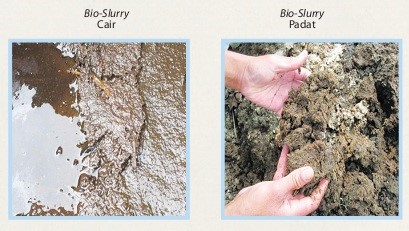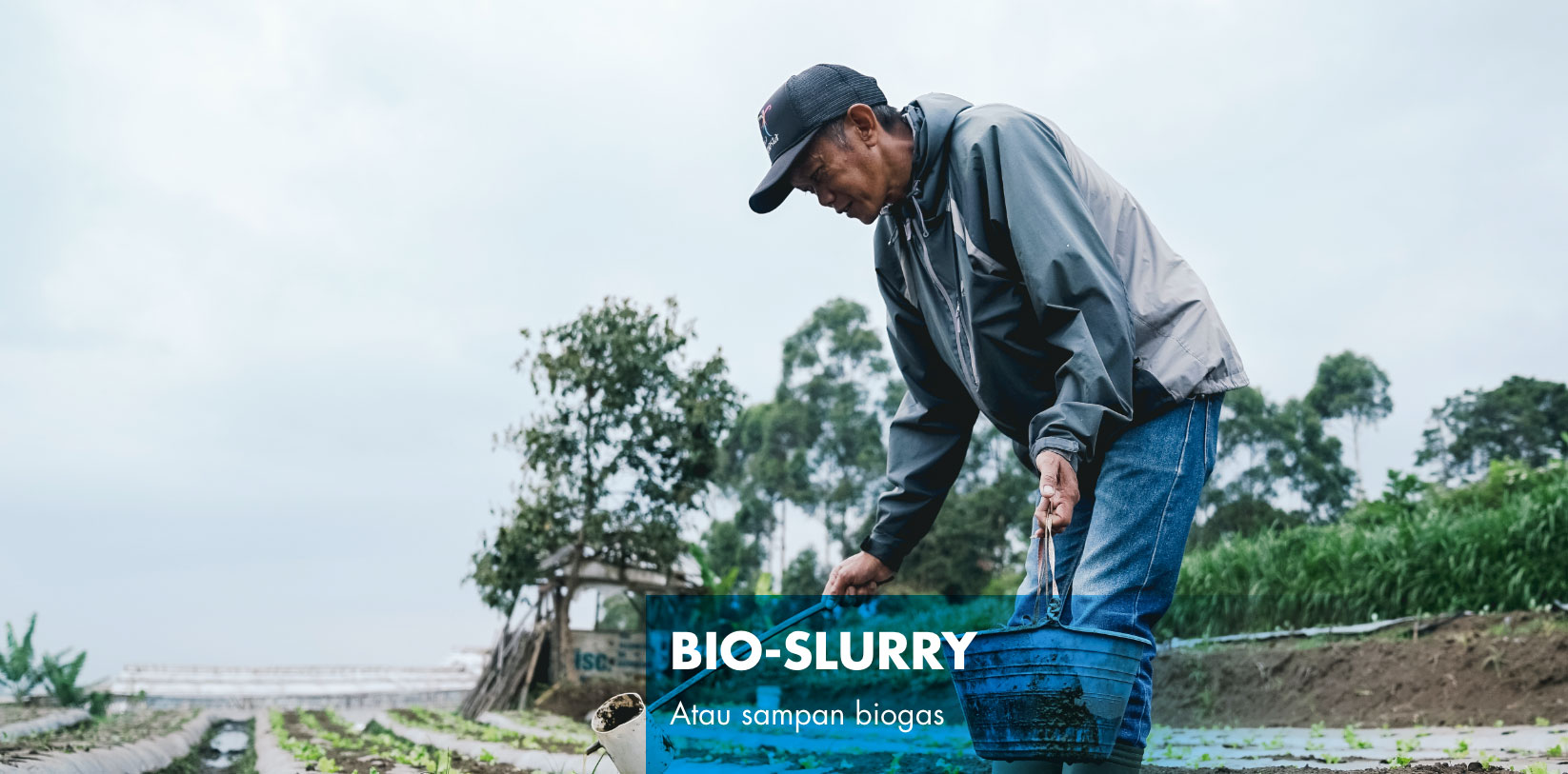Bio-Slurry
How to Use Bio-Slurry
With its rich nutrition and humus, bio-slurry is indeed suitable for plants. Also, bio-slurry has probiotics that can fertilize the soil. With this myriad of nutrients, bio-slurry can be a solution for breeders and farmers who need a place to dispose of their livestock waste but need a supply of natural fertilizers.
Before starting to use bio-slurry, it is helpful to understand how this bio-slurry is formed. Mainly, bio-slurry as the final waste from the biogas process that can no longer produce gas. In order to run biogas, manure and natural waste are needed, which are still fresh and have methane gas. So, bio-slurry is no longer required in the process, but it is still rich in nutrients that are good for the soil.
From the biogas product, bio-slurry will come out of the outlet pipe in two forms. The first is solid, and the second is liquid. These two types have no difference in nutrition or quality. The only difference is the amount of water and dirt that creates the texture.
Two types of bio-slurry can be used as fertilizer. These differences differentiate the way they are used. Among others:

1. Solid or dry bio-slurry
The right time to use bio-slurry is when cultivating the soil for the first time before planting. You do this by mixing the soil with bio-slurry. Also, bio-slurry mixing can also be done in the middle of the growing season. This solid bio-slurry will come out of the outlet to the slurry pit or slurry shelter.
Solid bio-slurry can be applied as a fertilizer or mixed into the soil when processing it for the first time. Also, it can also be done by mixing it in the mulch hole.
For solid bio-slurry, it can also be used as a mixture for non-cattle animal feed such as poultry and pork. Part of the ammonia nitrogen in the bio-slurry can be processed by the growing bacterial biomass converted into amino acids. Also, during the fermentation process, the bio-slurry can produce vitamin B12 suitable for livestock development.
2. Liquid or wet bio-slurry
Besides being used as fertilizer, wet bio-slurry can also be used for pesticides. How to use it is easy. You can pour it on the part of the land that is planted regularly. To get liquid bio-slurry, you need to mix it with water. The mixing ratio can be 1: 1 or 1: 2.
However, before use, the liquid bio-slurry that has just come out of the outlet is good to be deposited for one week. This deposition process is useful for removing gases that are not needed by plants and soil.

